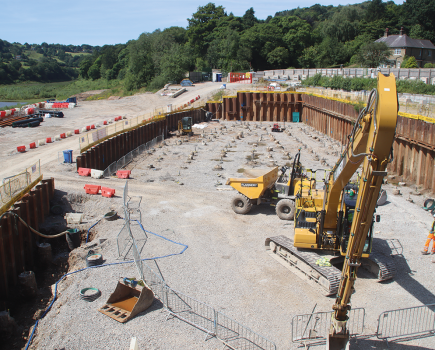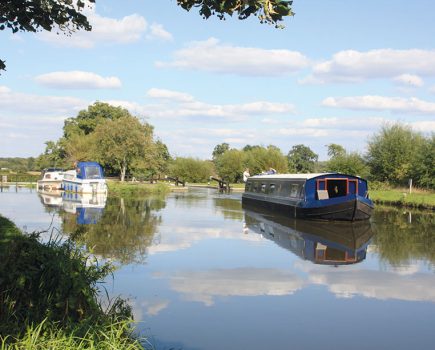The death of a young boy who fell from the Pontcysyllte Aqueduct leads Steve to question who is responsible
Let me confess something of which I am not inordinately proud. As a kid, maybe 15 or 16 years old, a small gang of us from the village where I lived in Leicestershire got tanked up on illicit booze and stole a couple of rowing boats laid up for the winter at Proctors Pleasure Park on the River Soar at Barrow. We used them to surf over the weir. For a dare. Or a bit of fun. Or something. The attraction to us was that the river was in flood at the time, furious and dangerous in a way that only those who have seen it in that condition can fully appreciate.
The stunt was complete foolishness. It was a miracle one, if not all, of us, didn’t drown.
I couldn’t help thinking of that crazy escapade recently when I heard about 18-year-old Kristopher McDowell, who in 2016 fell to his death from the Pontcysyllte Aqueduct as he was walking home after a shift at a McDonald’s. An inquest found that Kristopher had smoked a couple of cannabis joints with friends before squeezing through the towpath railings declaring: ‘I’m not scared to hang over the edge.’ Sadly, pulling the railings from the wrong side detached one of them and it came away in his hands.
Yes, another tragedy on the canals. Another wasted life. How can you not sympathise with his family at their loss? How can your heart not go out to them?
In an inquest report, Coroner John Gittins said that there was an element of stupidity in what Kristopher did, before strongly implying – there is no other way of reading it – that the Canal & River Trust must bear some responsibility for the death since some 300 or so of the 1500 railings of the 214-year-old Grade One listed structure were loose. He also observed that the gap between the railings didn’t meet contemporary industry standards.
I despair. What earthly comfort did this chucklehead think it would be to a grieving family to tell them that their much-loved son was acting stupidly when all he was doing was what every kid his age has done for generations? They have a spliff or a few drinks and they take some risks for the hell of it. I did it on the Soar years ago. I was lucky. Kristopher, God rest his soul, wasn’t.
Gittins’ observations about the railings on the aqueduct trouble me, too. What does he expect the upshot of his comments to be? Does he expect the whole aqueduct to be encased in some sort of protective wire cage? Or should we weld some extensions onto the Grade 1 listed structure? Maybe reinforce it with some chicken wire so that an historical edifice completed in the year of the Battle of Trafalgar can comply with contemporary building regs?
First reports seem to suggest that local people, who have developed a deep affection for their internationally famous tourist attraction, would be loath to see it disfigured by health and safety adaptations when thousands of people pass over it every year without mishap. I hope this stiffens C&RT’s resolve not to concede to any pressure in that direction. But I worry. It seems to me self evident that there’s a limit to the extent that any public organisation can do to protect people from themselves.
Yet nearly ten years ago, when 12-year-old Robert Fidoe died at Stourport Basin after riding his bike over a lock crossing with no handrails, C&RT established what I thought then was a dangerous precedent by immediately accepting liability – even though there were clear signs prohibiting cycling .
I complained at the time that this defensive posture was detrimentally changing the very fabric of the canals. Few lock crossings had rails when they were originally built. The fact that the one at Stourport now has seems to me small – but significant – erosion of the fragile structure of Britain’s unique historical inheritance.
Thankfully, C&RT’s attitude seems to have gradually evolved, and it was cleverly resistant to calls last year to ‘make the canals safer’ after 19-year-old Manchester student Charlie Pope drowned in the Rochdale Canal after falling in drunk. I mean, how can you make the canals safer without changing them into something they’re not? This is a Victorian transport system we’re talking about here, not a National Trust rose garden. Canals are inherently dangerous – which is something we on boats recognise, but which is perhaps not immediately obvious to others who use them, kids and teenagers especially.
C&RT shouldn’t cave in to any pressure to materially alter the unique Pontcysyllte Aqueduct – though it wouldn’t hurt to secure those wobbly railings.
__________
Follow Steve on Twitter @Cutdreamer
Award-winning current affairs TV producer, journalist and author Steve Haywood who has been a boat owner for more than 40 years







